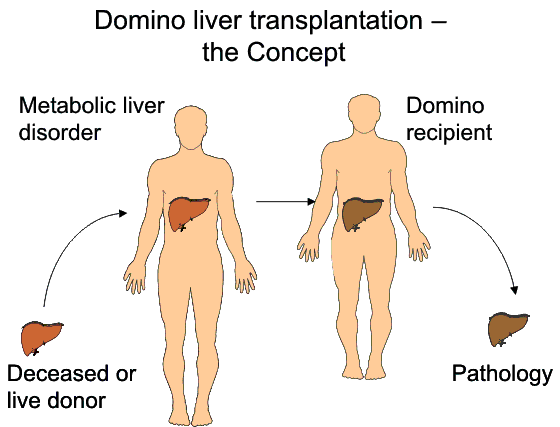
Introduction:
General
shortage of cadaveric organs has led to a search for alternative methods
to expand the donor pool. In domino transplantation organs explanted
during transplantation in one patient are transplanted into a second
patient. Domino liver transplantation (DLT) was first performed in
Portugal in 1995, when a removed FAP-liver was transplanted into another
patient in need of a liver transplantation. The domino approach can be
considered in several genetic or biochemical disorders that are nowadays
treated by liver transplantation. The crucial aspect is that such livers
ultimately cause severe systemic disease but do not affect other functions
of the liver. The first and main indication thus far has been familial
amyloid polyneuropathy.
In
order to gather as much information as possible on the DLT procedure an
international register, the Domino Liver Transplant Registry (DLTR), was
created in 1999 as an extension of the already existing Familial
Amyloidotic Polyneuropathy World Transplant Registry (FAPWTR).
The DLTR registers not only the use of livers removed from
FAP patients and
patients
with Fibrinogen a-chain amyloidosis, but also records data on livers used for transplantation
from patients with other metabolic disorders such as oxalosis,
hypercholesterolemia, hemochromatosis and maple syrup urine disease . However,
the livers from FAP donors make up the majority of those reported to the
DLTR.
By December 31, 2019, a total of 1289 domino
transplantations on 1268 patients
were registered. They were reported from 67 different hospitals in 21
countries.
